FAQ
Below you can find answers to the most common questions regarding Fiberbinder® and the FiberbinderMethod®
Below you can find answers to the most common questions regarding Fiberbinder® and the FiberbinderMethod®
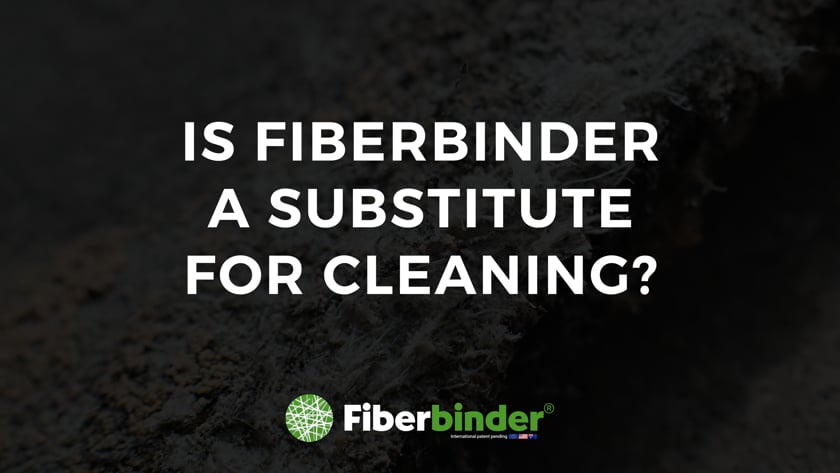
No, Fiberbinder is in no way a substitute for thorough cleaning!
At Fiberbinder, our focus is on the working environment, and the best working environment is achieved by removing as many asbestos fibers as possible.
So we believe that the process should be that you first remove the asbestos-contaminated material, then you do a very thorough cleaning in accordance with current regulations, then an inspection comes and releases the area and approves the cleaning, and finally you apply Fiberbinder.
In this way, you both remove as many fibers as possible, and you get to fixate the very last fibers that cannot be vacuumed away, so that you avoid these last fibers becoming airborne again when craftsmen come in afterwards to carry out their work in the field.
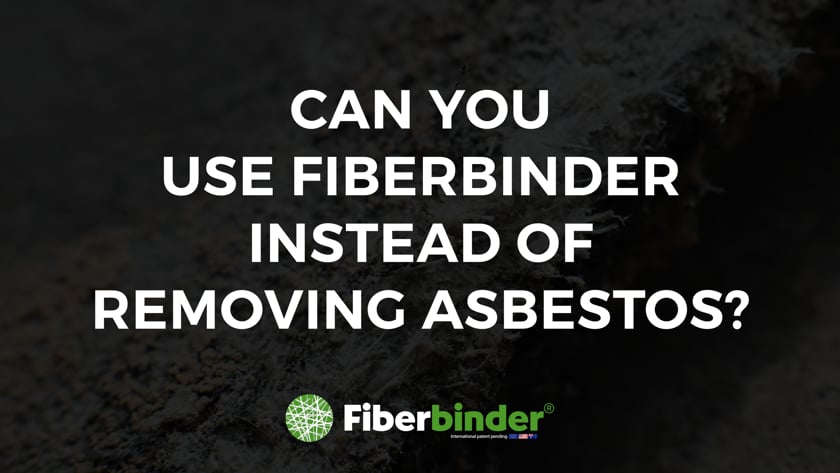
One of the questions we often get is whether you can use Fiberbinder as a substitiute for removing asbestos.
The answer is that you cannot!
Fiberbinder has two main areas of application:
Firstly, you can use Fiberbinder on top of items that must be disposed of afterwards. In this way, the amount of fibers that are released is reduced, so that there is less need for cleaning afterwards, and so that there is less spread to the local environment.
Secondly, Fiberbinder can be used on roof constructions that have traditionally been difficult to vacuum and clean completely of asbestos fibres. Here you can use Fiberbinder to fixate the very last few fibers that the vacuum cleaner cannot catch, so that you create a better working environment for the craftsmen who will subsequently work in the area.
Fiber binder can therefore be used to
1) fix fibers at the source and
2) fix the fibers that cannot be vacuumed away, but it cannot be used as a substitute for removing asbestos.
We must have removed as much asbestos as possible.
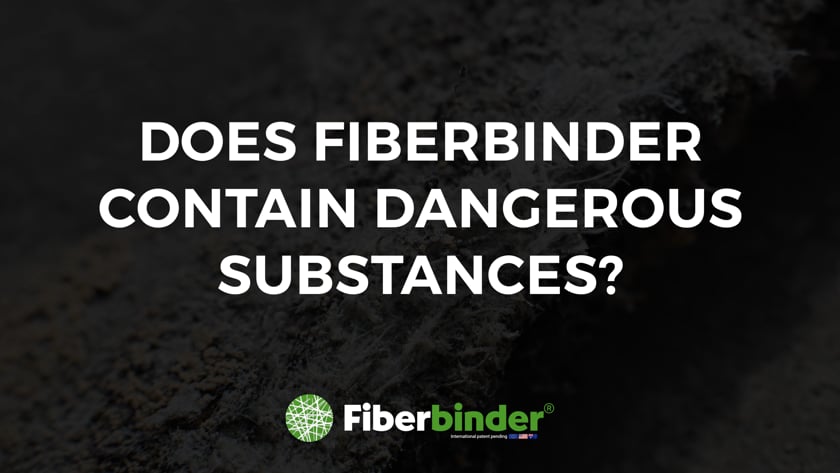
No, Fiberbinder does not contain any dangerous substances.
Overall, it has been very important to us to design a product where we do not replace one bad thing with another bad thing, and with Fiberbinder we have succeeded in that.
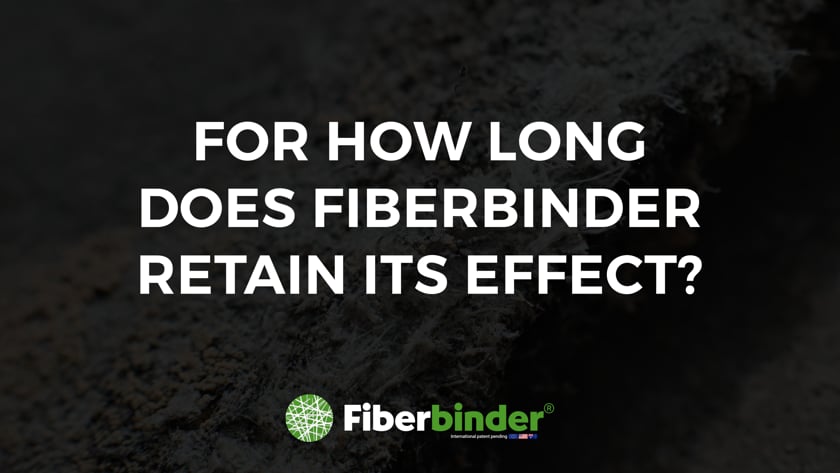
Fiberbinder maintains its effect for at least 12 months.
We have tested the product for a considerably longer period, where it also works, and the likelihood that the last few fibers in cracks and crevices which Fiberbinder fixates will ever be released again is probably small.
However, based on a precautionary principle, we have chosen to enter the market with 12 months. We have chosen that because this area is so important that we would like to create a situation where, after 12 months, a concrete assessment is made again of whether the working environment is safe enough to send people into. We owe it to the craftsmen.
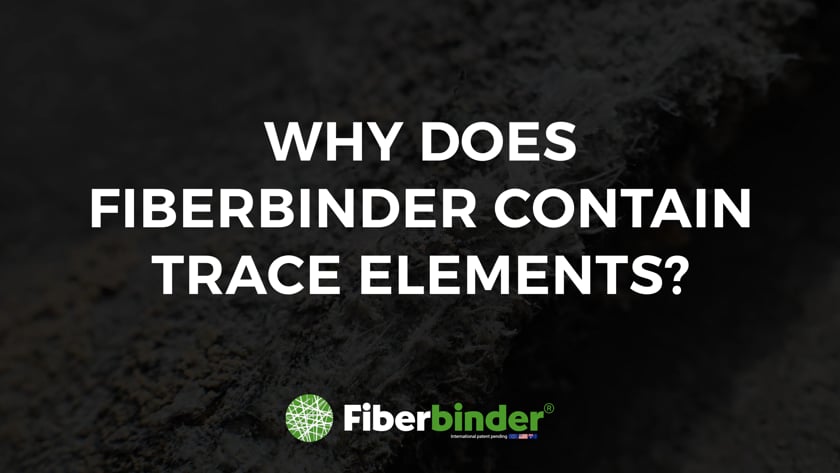
There are several different reasons why there are trace elements in Fiberbinder.
Firstly, the pigment makes it incredibly easy to see how far you have come.
Secondly, it improves the QA documentation. The pigment makes it easy to take some really nice pictures of the use of Fiberbinder and that you have been all over the area.
In addition, there are two different types of trace elements in Fiberbinder.
Pigment, which you can clearly see on wooden structures, and UV fluorescence, which you can clearly see on roofing tiles and other items that need to be disposed of.
The last reason why there is trace elements in Fiberbinder is in relation to the subsequent craftsmen. Creating a good mental working environment is a big part of this as well, and the craftsmen who subsequently have to work in the areas, have a great advantage and security from being able to see that the FiberbinderMethod has been used, so it’s a safe area to enter.
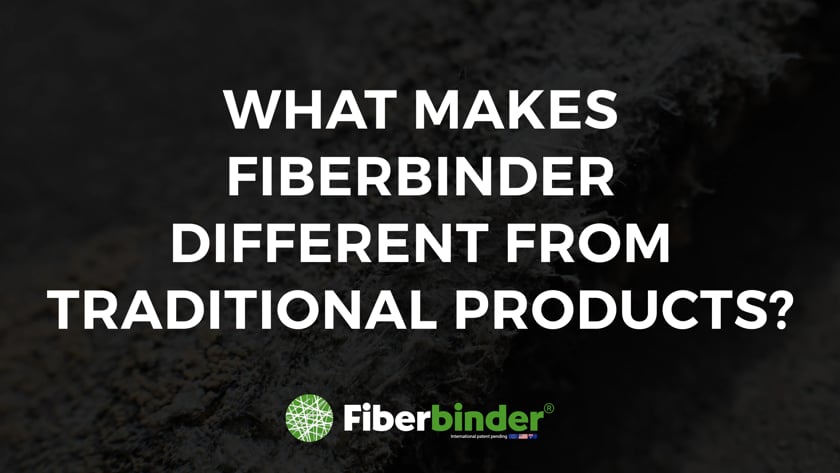
What particularly distinguishes Fiberbinder from traditional products is that Fiberbinder has a lasting stickiness which is sufficient to fixate fibres, but which in no way bothers the craftsmen who subsequently have to work in the area.
The persistent stickiness results in the big difference from traditional products, that it does not create a new surface around the wood, which could prevent the wood from breathing. Fiberbinder, on the other hand, penetrates into cracks and crevices, where it fixates the few remaining fibers without encapsulating the wooden construction.
Traditional methods often create a new surface where the asbestos fibers are encapsulated together with the wooden structure, and this presents two challenges:
Firstly, you risk reducing the wood’s ability to breathe and thus reducing the lifespan of the wooden construction.
Secondly, there is a risk that the new surface will crack when the subsequent craftsmen carry out their work, and thus there is again a risk of the remaining fibers becoming airborne.
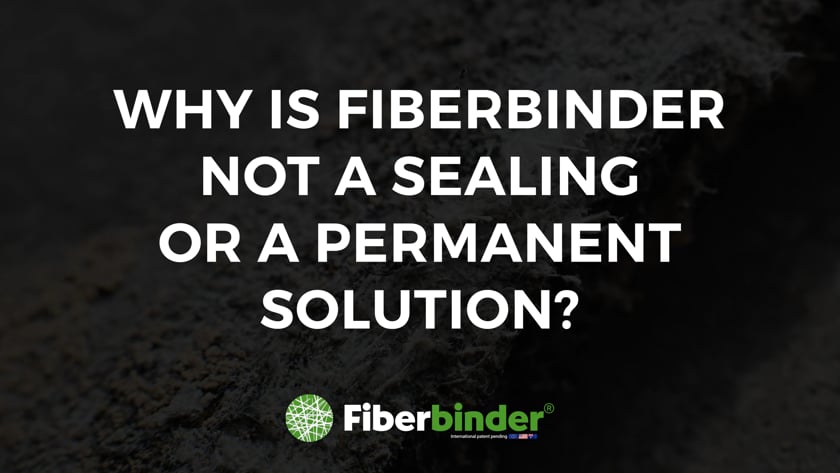
Fiberbinder is neither a sealing nor a permanent solution, and it is a strategic choice we have made from the very beginning.
This is because we want to ensure that as many asbestos fibers as possible are removed.
If we had entered the market with a product that sealed the surface or was a permanent solution, then we would fear that instead of removing as many fibers as possible, people would move in the direction of encapsulating as many fibers as possible .
In terms of the working environment, it would be a disadvantage for the craftsmen who have to enter and work in the areas both in the short and long term.
In addition, you also have to look at when you can call something a permanent solution. By the nature of things, there are no products that have been tested for time and eternity, so how long does it take before you can call something a permanent solution?
In this incredibly important area, it is absolutely crucial that we don’t sell false security, and that is why we enter the market with a product that we can document works for at least 12 months.
The construction industry’s role in the green transition is another reason why we have not entered the market with a product that seals the surface and is permanent. As an important part of construction’s green transformation, it is necessary to reuse and preserve functional building parts, and therefore it does not make sense to pack an otherwise functional wooden construction into a product that reduces its lifespan.
With Fiberbinder you apply a product which does not reduce the lifetime of the construction, but which fixates the remaining few asbestos fibers and solves a major work environment challenge.
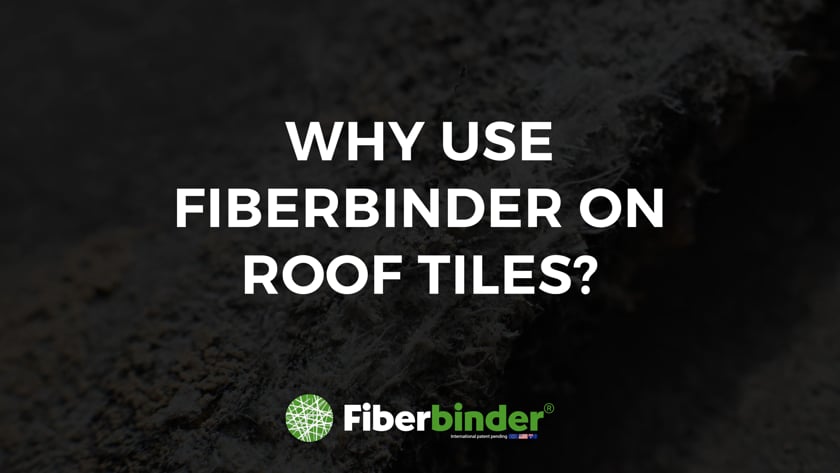
Fiberbinder is used as a wetting agent on top of roof sheets before dismantling them, to minimize the risk of spreading asbestos fibers into the environment.
When you dismantle old, porous roof sheets, it releases asbestos fibers. And if you have not moistened the surface, there is a risk that asbestos fibers will spread and end up in the surrounding environment. There is also a risk that the fibers will land on the ground together with moss and other vegetation, and that they will then be carried into the buildings.
Traditionally, water has been used as a wetting agent. The advantage of Fiberbinder is that it does not evaporate in the same way that water does, and that it has a viscosity that means that Fiberbinder does not run off the roof sheets in the same way that water does.
With the FiberbinderMethod, the asbestos fibers are fixated to the surface instead of them being spread into the surrounding environment. And with the persistent stickiness of Fiberbinder, you also get the advantage that the fibers are fixated all the way to landfill.
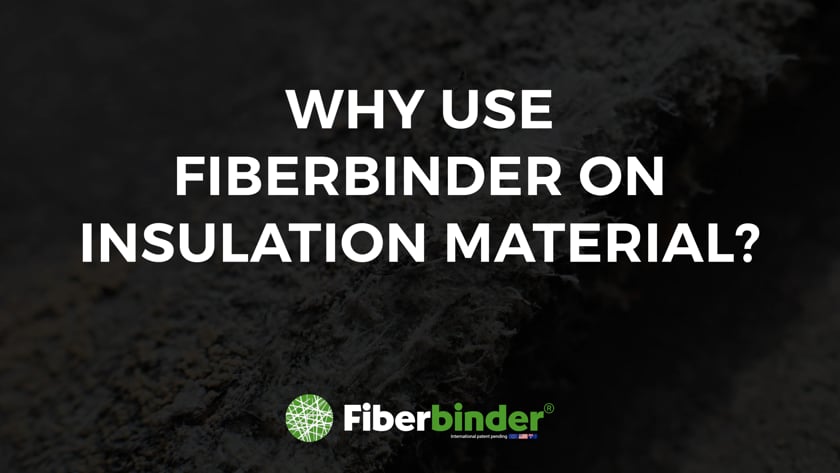
Fiberbinder can be used on insulation material in connection with the disposal of the insulation.
When an asbestos roof over the years has released asbestos fibers onto top of the insulation, there is no reason for these fibers to be swirled up on the surface and then have to be vacuumed away. The vacuuming process and the cleaning process are difficult enough already.
With Fiberbinder, the fibers are fixated to the surface, and they then go into the bag when you dispose of the insulation material.
In addition, you gain the great advantage that the fibers are fixated all the way to the landfill, and that the landfill worker is protected as well if the bags should be punctured during the process.
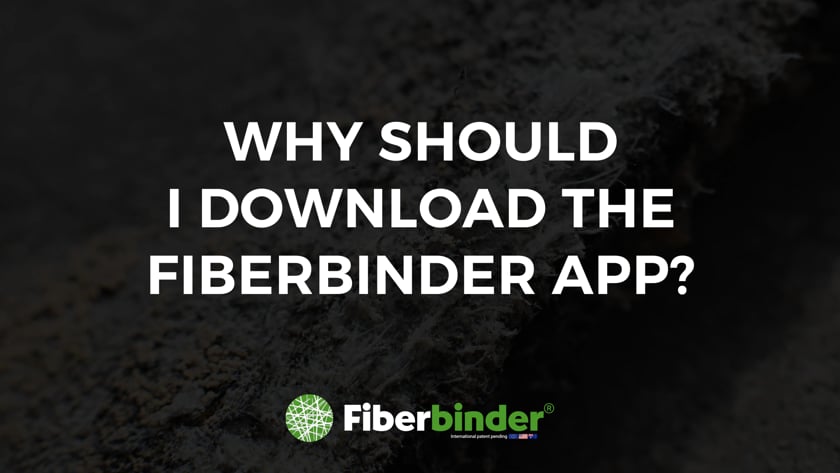
There are several good reasons to download Fiberbinder’s app.
Firstly, the app contains thorough instructions on how to perform the Fiberbinder Method. The instruction is available in different languages, and is available both as a video and as text.
Secondly, the app contains the possibility to create QA documentation in a really easy way. You can both take pictures directly in the app, and you can transfer pictures from your phone, and at the end you get a pdf report that can be read into Dalux, Ajour, etc.
Thirdly, the app helps you document that an inspection has released the area for Fiber bonding, and in that way you also get extra security if you use the app.
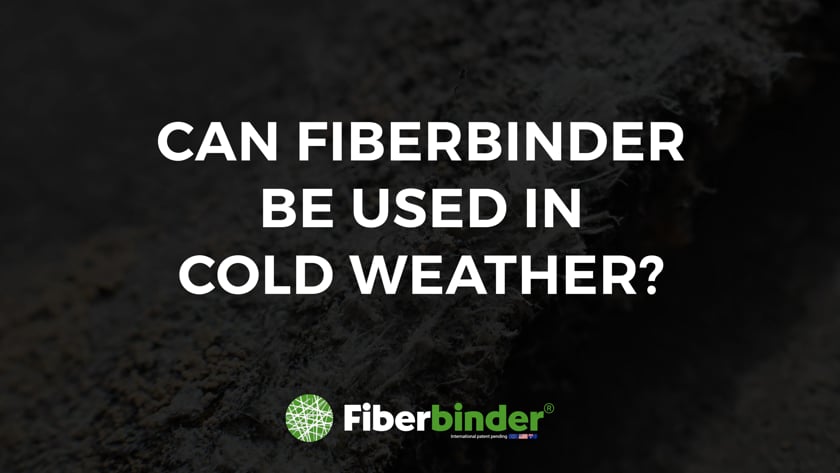
Yes, Fiberbinder can be used in all kinds of weather.
One of the advantages with Fiberbinder is that it can be used down to approx. minus 10 degrees, which means that even if it is winter and frosty, the Fiberbinder process will not delay the construction process.
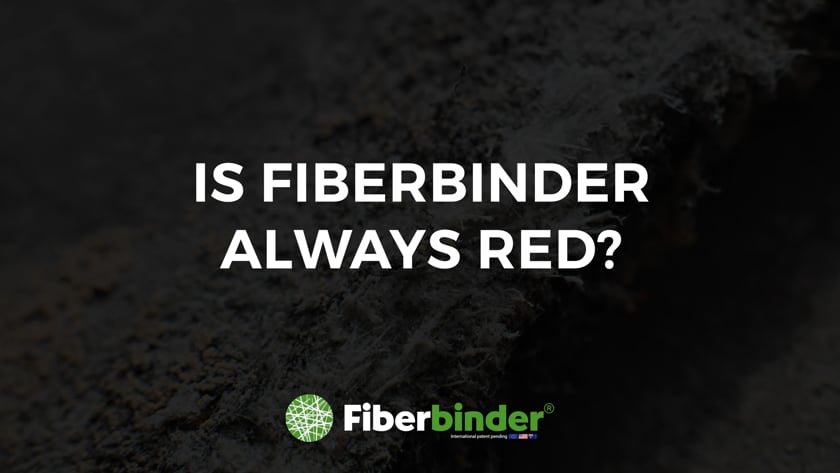
Fiberbinder is available in two variants.
There is the traditional variant with the red pigment, which has the advantages that you can take some good pictures for your QA documentation, and that the subsequent craftsmen clearly can see that Fiberbinder has been used to ensure a safe working environment.
In addition, there is the clear version, which has UV fluorescence in it, but no pigment, if for some reason you do not want a pigmented surface.
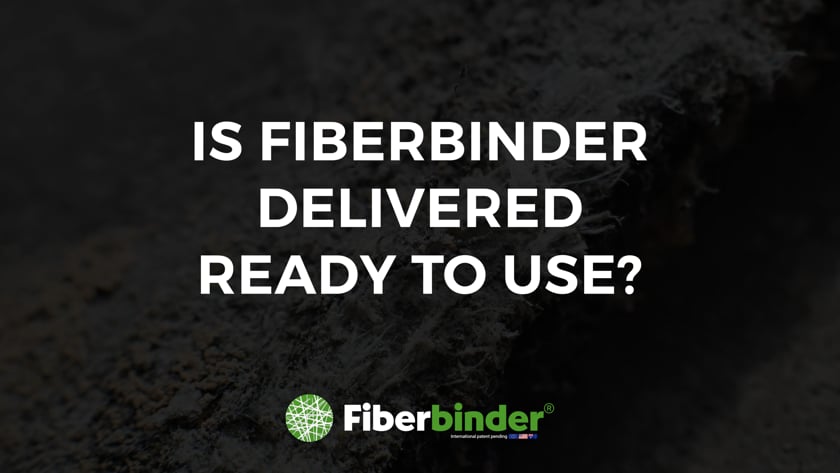
Yes, Fiberbinder is delivered ready to use.
You need to shake it before you pour it into your electric sprayer, but apart from that you don’t have to do anything else.
And that means that you don’t need access to water, you must not carry around more than absolutely necessary. You can just use it, straight from the container.
Fiberbinder® Copenhagen
Roholmsvej 8, 2620 Albertslund
Tlf. +45 53 81 94 00
CVR: 42040886
Fiberbinder® Odense
Kochsgade 31D, 5000 Odense C
Tlf. +45 53 81 94 00
